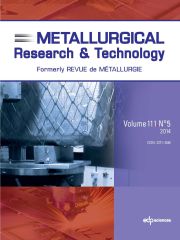Article contents
Material pinch analysis: a pilot study on global steelflows
Published online by Cambridge University Press: 12 December 2014
Abstract
Many materials can only be recycled a limited number of times because of physicaldegradation (paper and board), chemical degradation (plastics), or impurities (severalmetals). Management of the quality of materials is a key to high long-term recycling ratesand, hence, to the sustainable future. This key includes several elements, such as:retaining the quality of materials in the production and use of products; retaining thequality of materials in the recycling processes; and using high-quality materials onlywhen it is required. Pinch analysis is a set of methods to optimize physical flows bytaking the quality into account. It was originally developed for minimizing the energydemand in process industries. It has been adapted for optimization also of water andsolvents flows. A Japanese research group applied part of the method on flows of steelwithin Japan and globally. We present a pilot study that illustrates how all the elementsof the basic pinch approach can be applied to global systems of material flows. Ourmaterial pinch analysis (MPA) distinguishes between three categories of steelapplications, each with its own requirements on the material quality: rolled steel,sections and re-bar. Copper in wiring etc. increases the copper content of steel recycledfrom machinery and eventually restricts the recyclability of the steel in a global systemwhere steel use does not increase. This is important because an MPA is mainly relevantwhen impurities or other quality aspects restrict the recycling rate. Our quantitativeresults should not be considered accurate reflections of the reality, because the pilotstudy is to a large extent based on assumptions and crude data. However, the model gives afirst indication that the maximum recycling rate of steel is approximately 80% in apotential future when steel use does not increase, unless technology is improved. A fullMPA with more thorough data collection would more accurately define the maximum long-termrecycling rate and the minimum quantity of ore-based material. In addition, a full MPAwould give information on for what applications ore-based material should be used, andwhat scrap flows should be discarded rather than recycled. Such information can beimportant for policy-making aiming at increased resource efficiency. If it is importantfor policy-making it is also likely to be important to industrial companies that can beaffected by policies.
Keywords
- Type
- Research Article
- Information
- Copyright
- © EDP Sciences 2014
References
- 7
- Cited by


